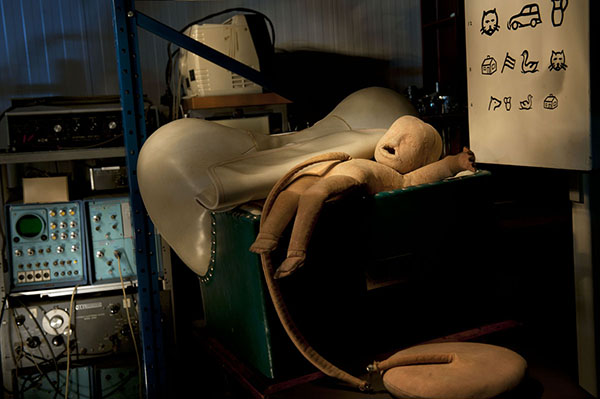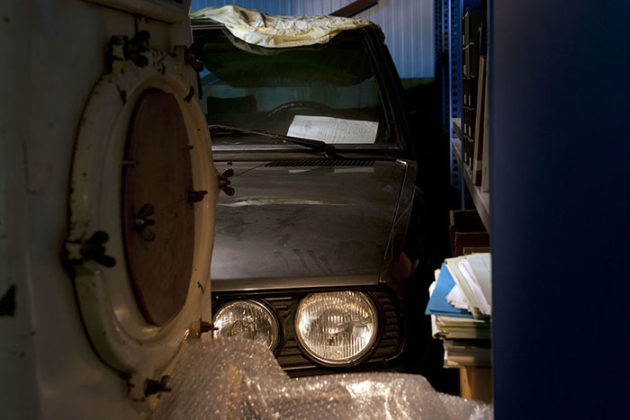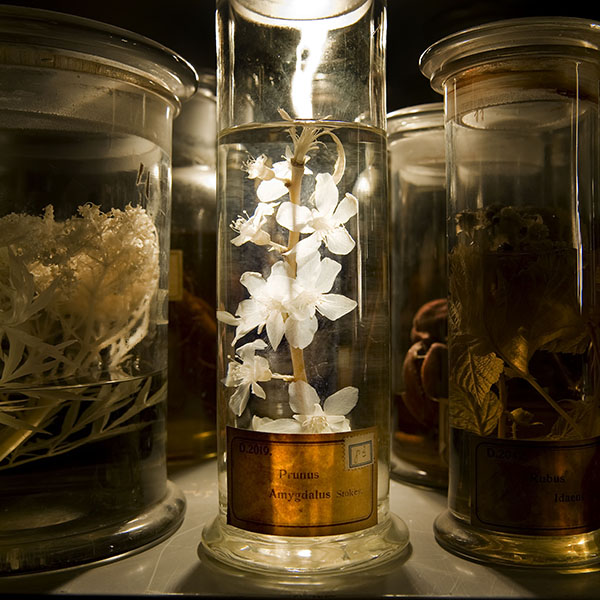
University museum wants to modernise
Big plans, small budget
If you’re curious about the history of science, sign up for a tour of the depot at the University Museum (UM). The little-known museum is tucked into an alleyway off the Kijk in ‘t Jatstraat, next to the university library. It boasts an amazing collection – and you’ll definitely want Jan Waling Huisman to be the one to guide you through it. Huisman, who has maintained the collection for over thirty years, knows every story behind every object.
Some of the museum specimens – including hundreds of mounted birds, a giant hippo skull, and an emu skeleton – were collected by Groningen zoologists as late as the nineteenth century. Some of the more bizarre objects – like once-aborted embryos preserved in formalin – are not exactly for the faint of heart. At one time, these were used to teach students about deformations and development in utero and the physical effects of diseases like tuberculosis.
Meteorite
Huisman can also tell you all about the rare meteorite that a Russian scientist once gifted to the famous Dutch scientist Petrus Camper, the hat that RUG archaeologist Van Giffen always wore during his excavations, and the Nobel Prize medal that ‘our’ Nobel Prize winner Ben Feringa donated to the museum.
Everyone who ever studied at the RUG should have visited the museum at least once
It’s an amazing collection, so why aren’t more people coming to see it? Attracting visitors isn’t as easy as setting up a display case. It takes creativity, organisation, an enthusiastic team, and – money.
A BMW 518 from 1984, used as a simulator in the Verkeerskundig Studiecentrum in Haren.
But there isn’t much money to work with, so the UM is looking for a way to do their collection justice with a small space and a small budget.
Visitors
In 2018, only 11,000 people visited the UM, including school tours. The museum was also closed for renovations for much of the year, which surely affected visitor numbers. But 11,000 is still a paltry turnout, even with all things considered.
The Museum Boerhaave in Leiden and the University Museum in Utrecht prove that scientific exhibits can attract a lot of visitors: Boerhaave had more than 100,000 visitors in 2015 and Utrecht drew 75,000 in 2017. What is their secret? Both museums have good websites and find a way to make exhibitions fun, interesting, and hands on.
But the UM seems to struggle with their public relations. Very few students actually know that it exists at all. Anyone who does enter the museum encounters mysterious and fascinating objects in rows and rows of display cases, but no one is there to tell them what they are. The exhibitions often fall flat; there is too much text and not enough interaction.
Turn it around
This isn’t a new problem. Museum directors have tried to solve it before. Twenty years ago, there were extensive plans to merge all the small museums in Groningen into one. Fifteen years ago, the museum was moved to a new building, and artist Wim T. Schippers set up the exhibition ‘Sporen van het Spullenbeest’. Five years ago, when the UM was brought under the umbrella of the new Heritage department at the RUG, a group of experts argued that the museum should get more money for marketing. They said the museum’s singular collection would could be leveraged into a flourishing enterprise.
The museum will have to make more money
Disappointed
But all the plans failed. ‘We were very disappointed that the merger of the small Groningen museums didn’t take place’, says UM interim director Arjen Dijkstra, who has led the team since last September. ‘It would have been a great opportunity for the museum: more space, more curators…’

A chamois baby manikin with detachable umbilical cord, used by medical students to practice childbirth in 1867.
The museum’s anniversary in 2014 attracted a record number of 25,000 visitors to the museum, but even that infusion of attention couldn’t right the ship. Eventually, ‘we just ran out of steam’, says Dijkstra. ‘The discussions about the future and the plans took a lot out of us.’
Eighteen months ago, the board of directors tasked a special committee with coming up with a new plan: ‘UM modern’.
Interaction
This plan has been approved, but Dijkstra won’t divulge anything about it yet. ‘I’m still in talks with the board’, he says. ‘It’s more complicated than I thought.’
A plum tree in formalin from the nineteenth century.
But Dijkstra is sure of one thing: the ‘modern’ museum should invite visitors to play a more active role in the stories it has to tell. ‘We have to become a place where students can actually do something. And alumni should be able to come here and be transported back to when they were students.’
He thinks changing focus will lead to an increase in visitors – between 20,000 and 30,000 a year. And Dijkstra hopes a lot of those visitors are students. ‘Otherwise something that’s about the university wouldn’t involve its most important element: students. I’d love it if everyone who studied at the RUG visited our museum at least once.’
Make money
But to make this ambition a reality, the museum needs a financial boost. The institutional budget for 2017-2020 is 700,000 euros. Museum staff amount to about 500,000 of that. Eventually only 130,000 euros are left for everything else, including exhibitions. That’s not much, considering exhibitions cost anything between 20,000 and 200,000 euros.
It isn’t much, Dijkstra says. ‘130,000 isn’t enough to execute all the plans. The museum will have to make more money.’
A place where outsiders and alumni can get to know the RUG
He hopes to do so through fundraising. The UM has also started charging an entrance fee of three euros. Only RUG staff and students can still get in for free.
Support
Dijkstra says other university museums have been doing it for years. ‘People who like visiting museums don’t do it because it’s free.’
But he is forced to admit that the UM will need more than entrance fees to transform into a modern institute. The university will have to make a contribution. ‘But’, says Dijkstra, ‘we do need more than just a larger budget. That would just make us lazy.’
What he really hopes for is support from the board. ‘Support the museum as a place where students and staff can learn about the history of the museum. A place where outsiders and alumni can get to know the RUG and Groningen. I think that’s more important than just giving us money.’
Doerak
The UM has already started experimenting with new ways to reach students. When university cat Doerak became an overnight sensation, the museum capitalised on his celebrity by setting up an exhibition about university cats. The exhibition included other weird, feline attractions – like the cat skulls excavated by that famous archaeologist, Van Griffen.
Meanwhile, art historian Eva Rogers has been employed as a visiting curator. She will work with the Vera Art Division to redesign the educational room. The room will feature spatial art installations. Dijkstra says it’s going to be really cool. ‘And I hope we can collaborate with more interesting people in the future.’
The University Museum will officially reopen on 5 June, when all the exhibition rooms will be available again.



